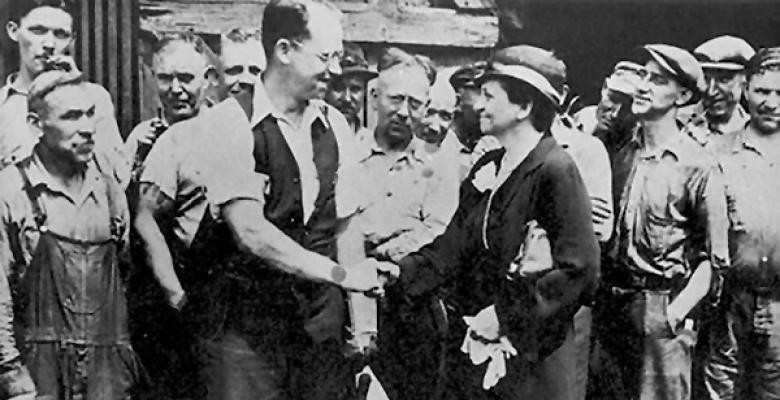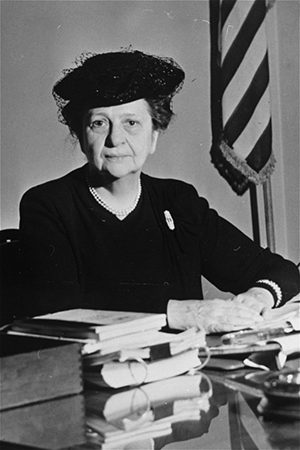Roosevelt told his wife, Eleanor, that he liked that Perkins was not selfish and therefore he could work with her, according to Stephen Paul Miller, author of the recent book, The New Deal as a Triumph of Social Work.
Perkins was the driving force behind many facets of the New Deal. During her tenure the first minimum wage, federal child labor laws, the 40-hour work week and maximum overtime regulations were introduced. As was the Social Security Act, which offered unemployment insurance and financial assistance to the elderly. Regarding Social Security, Roosevelt told Perkins: “You believe in it. Therefore, I know you will put your back to it more than anyone else and you will drive it through.”
Perkins biographer Kirsten Downey notes in her book, The Woman Behind the New Deal, that Associate Supreme Court Justice Louis Brandeis gave Perkins guidance on Social Security. And, in their books on Perkins, both Downey and Miller detail another key piece of guidance from Associate Justice Harlan Fiske Stone. While much of the New Deal legislation faced legal challenges, Justice Stone, a former Columbia Law School dean, did not want to vote against the Social Security Act and had gauged how his colleagues on the court might rule. He invited Perkins to a tea party at his home, where he discretely advised her to stress the taxation powers of government so that the drafting would not be viewed as the Federal government interfering and overstepping its boundaries.
Perkins’ work in FDR’s Cabinet was the capstone of a career that showed early promise. After graduating from Mt. Holyoke College in 1902, she worked at Chicago’s Hull House, led by Jane Addams, a noted figure of the settlement movement. She then earned a master’s degree in political science from Columbia in 1910, where fieldwork in the Hell’s Kitchen neighborhood of Manhattan led to her thesis, “A Study of Malnutrition in 107 Children from Public School 51.” She argued that malnutrition did not result from a scarcity of resources, but from social workers’ failure to match resources to needs.
From there, Perkins became executive secretary of the New York City Consumers’ League. In 1911, she was visiting friends in Washington Square and witnessed the fire at the nearby Triangle Shirtwaist Factory that killed 145 workers who were trapped because of inadequate safety features and locked doors; 58 of them jumped to their deaths.
In the wake of the fire, a citizens Committee on Safety was established and, at the suggestion of Theodore Roosevelt (Law’1882), Perkins was named its head. A state investigation resulted in the most comprehensive set of laws governing workplace health and safety in the U.S. Perkins later said that the New Deal resulted from that factory fire.
She became executive secretary of the Council on Immigrant Education in 1921 and was later named New York State industrial commissioner, serving under then-governor Franklin Roosevelt. He brought her with him to Washington when he was elected president.
After Roosevelt’s death, President Harry Truman chose her to join the United States Civil Service Commission in 1945, where she served until 1953. She wrote a bestseller, The Roosevelt I Knew, and taught at the Cornell University School of Industrial and Labor Relations until her death in 1965. The national office of the U.S. Department of Labor in Washington D.C. is named in her honor.
Columbia’s Rare Book and Manuscript Library holds the bulk of Perkins’ archival papers. She was the subject of one of the very first interviews by Columbia’s Oral History Research Office, recorded between 1951 and 1955. In the oral history, Perkins discusses her social survey of Hell’s Kitchen, noting, “What I got out of it was, of course, a liberal education.”

